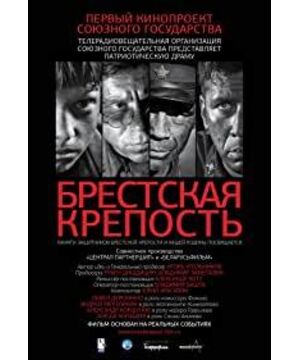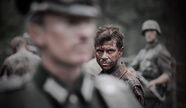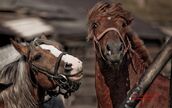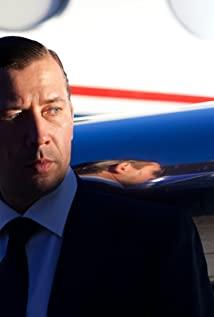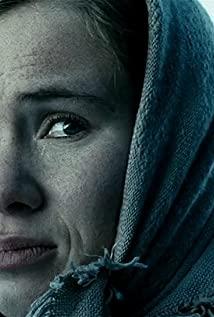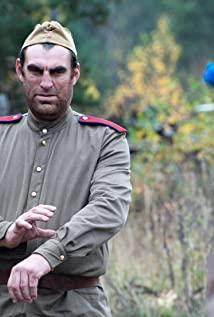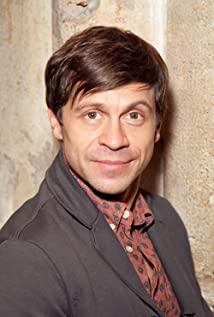"Brest Fortress" has been translated into "Decisive Battle Fortress". It is probably because they are all about the confrontation between Soviet Russia and Germany in World War II. Therefore, Chinese publishers want to work hard on "Soldiers". Rely on it to get more box office. As a Russian war film filmed in 2010, it was only released in China in 2012, and it is said that the movie theater version was cut for more than 20 minutes. If so, I really want to greet the Scissorhands mothers again.
With the outbreak of World War II, the German raid on the Soviet Union was an important event. Originally, the Soviet Union under Stalin had signed a non-war treaty with Nazi Germany, and the two countries had divided Poland. When Germany was winning Lien Chan on the Western Front, the Soviet Union was going to see a joke, because it was a war between capitalist countries and it seemed to have nothing to do with the great socialist Soviet Union. Germany under Hitler's leadership did not think so. Hitler not only wanted to take over Europe to the west and south of Germany, but also the whole of Europe, which required an offensive against the Soviet Union. Therefore, on June 22, 1941, Hitler tore up the Soviet-German non-aggression treaty and dispatched 190 divisions, 3,700 tanks, 4,900 aircraft, and 47,000 with a plan code-named "Barbarossa" prepared in advance. Cannons and 190 battleships. The army split into three groups and attacked the Soviet Union in a blitzkrieg. On July 3, 1941, Stalin delivered a radio speech to the Soviet people, calling on all the Soviet people to unite and go all out to fight Hitler's fascists in a desperate struggle, and the Soviet-German war broke out in an all-round way. It was precisely because of the multi-line attack that plunged heavy troops into the open country of the Soviet Union. The German offensive gradually went from prosperity to decline, and successfully entangled the German troops in Stalingrad and launched a counterattack. In November 1942 Yue completed the counterattack and eventually saved Stalingrad, and this battle became a turning point for the entire World War II. From then on, the German army changed from offensive to accepting, and gradually went to extinction.
The defense of the Brest Fortress took place at the beginning of the Soviet-German War. Under the offensive of the German blitzkrieg, the war situation was like a broken bamboo, and the Soviet Union lost across the board, and even collapsed. It was against this background that the defense of the Brest Fortress on the east bank of the Burg River on the border between Belarus and Poland, because of the persistence of Soviet fighters, dragged some of the elite troops of the German Army locally and attacked Germany’s surging force. arrogance. However, because of the overall defeat of the Soviet Union, the war in the Brest Fortress did not seem to have such a big impact on the overall situation. But the bravery and sacrifices of the Soviet soldiers who stood by were even more tragic and worthy of cherishment.
Just like, on the Chinese battlefield, until the "Lugou Bridge Incident" broke out on July 7, 1937, Japan invaded China in an all-round way. He invaded Shanghai from the eastern sea on August 13 of the same year, directly threatening China's economic center and the national capital at that time. And just as the German army invaded the Soviet Union, China, as the defensive side, did not have too much strength to defend against the surging Japanese heavyweight forces. I had to evacuate the whole line, leaving only the four-line warehouse along the Suzhou River in Zhabei, Shanghai to stick to it. It was led by the Lieutenant Colonel Xie Jinyuan, the Lieutenant Colonel Regiment of the National Army, and the official logo of the Major Regiment, and Yang Ruifu, the Major Battalion Commander, from October 27th. By November 3, the 8th was successfully held, which partially stifled the state of the Japanese offensive. Because the commander of Xie Jinyuan claims to have 800 soldiers, the record of 800 dead soldiers shines at home and abroad.
The Battle of Brest Fortress that took place between the Soviet Union and Germany was the Soviet-Russian version of the "Four Row Warehouse" defense battle. Sixing Warehouse is located by the Suzhou River, while the Brest Fortress is located on the east bank of the Bug River. And as early as 1918, Brest was famous once, because that time was the signing of a peace treaty in Brest between the Soviet-Russian government and Germany and its allies in World War I--"Brest The Treaty of Litovsk, which allowed Lenin to take a breather under Soviet Russia and gradually developed. In addition to this battle for the defense of Brest, the Battle of Lublin-Brest, which took place from July 18 to August 2, 1944, also made Brest once again attracting attention. This battle marked the expulsion of the German army from the border of the Soviet Union, and triggered a Polish uprising, which accelerated the pace of Germany's demise.
The complete Brest Fortress consists of four independent islands separated by the Bug River and the artificial canal, and the central castle is located in the center of the entire fortification area. To the southwest of the central fortress is the Terespil Fortress, to the south is the Warren Fortress, and to the north is the Kobrin Fortress as a barrier. The fortresses are surrounded by rivers, and the fortresses are connected by bridges. However, due to delays and poor coordination, the complete fortress was not fully completed, which was successfully explored before the German invasion. Moreover, there are not many troops stationed in the Brest Fortress. In the early summer of 41, most of the fortresses were used for routine camping training. There are more than two regiments, and they belong to different units. At that time, Marshal Burke commanded more than 50 divisions, formed a central cluster, and governed two powerful tank regiments. They planned to destroy the Brest line from the north and south, penetrate the hinterland, encircle the defenders, and then join Minsk. Then it passed through Smolensk and approached Moscow. Hitler renounced the extinction of the Soviet Union in three months. As for Brest, the Germans at the time declared that they could be won with a single charge.
For Brest guards who were unprepared for war, the Germans formulated the tactics of using infantry units equipped with heavy firepower to siege and destroy the fortress to guard the Soviet army, while the armored units detoured from the north of the fortress. The German General Staff gave the task of capturing the Brest Fortress to the 45th Infantry Division. The predecessor of the division was the 4th Division of the Austrian Army. After the merger of Germany and Austria, the German Army was changed to the 45th Infantry Division. In the middle of 1939, the 45th Infantry Division was attached to the Southern Front Group under the command of the German Marshal Leinster. In the hot weather, it marched 400 kilometers on foot for 13 days, an average of 30 kilometers per day, and throughout the battle Only 158 people were killed, leaving a deep impression on the German General Staff. In the Battle of France in 1940, the Forty-Fifth Division forcibly crossed the En River in France and entered Paris for the first time, making great military exploits. In the summer of 1941, this unit was assigned to the Twelfth Army of the German Second Armored Group. The task given to the 45th Infantry Division on the first day was to quickly take down the Brest Fortress. The Soviet troops in the fortress are the Special Military Region of the West of the Soviet Union (renamed the Western Front after the outbreak of the war, commander General Pavlov), the 42nd Infantry Division of the 28th Infantry Corps of the Fourth Army and the Sixth Orr Seven infantry battalions, one reconnaissance battalion, and two artillery battalions of the Love Red Banner Division, in addition to the Seventeenth Red Banner Brest Frontier Defense Corps, the 33rd Independent Engineering and Construction Regiment, and the Soviet NKVD No. 1 The first part of the 32nd Battalion, with a population of about 7,000 to 8,000, the Soviet 28th Infantry Corps and its subordinate 42nd and 6th Division command posts are located in Brest, three kilometers east. In the city, June 22 is Sunday. As usual, many middle and high-level commanders took the train to Minsk or Vilnius in the north for the weekend.
Thus, in the context of the tragedy, the Battle of Brest Fortress broke out. At 3:15 a.m. on June 22, 1941, fighting broke out. With strong fire support from the German army, the first attack wave of the 45th Infantry Division of the German Army took only 4 minutes and was forced to cross to the opposite bank of the Bug River at 3:19. After 4 minutes, at 3:23, it was mainly attacked by engineers. The second wave of forces also crossed the Bug River. The two assault teams cooperated with each other, and after a short battle, they quickly passed through the Terespil Fortress and the Warren Fortress, and went straight to the central fortress. But what happened next was not as smooth as the Germans had imagined. The Soviet soldiers, who were awakened in their sleep, responded quickly and immediately organized a counterattack. Thus, the German offensive plan was completely disrupted. But the overall situation is at a complete ear disadvantage for the Soviet defenders. The remaining Soviet officers and soldiers in each fortress came from different units. Although they could not get in touch with each other, they chose their own commanders from their respective mixed groups. The combative mixed forces were divided into three parts, and they were divided by the German forces in the central fortress, the Kobrin fortress and the Terespil fortress. The Soviet army in the central fortress was also divided into three parts. One was gathered at the Terespil Gate, the second was gathered at the Holm Gate and nearby barracks and churches, and the third was guarded in the northern part of the central fortress. Brest Gate. These soldiers were fighting each other. Only the soldiers of the central fortress held a joint meeting on the evening of the 22nd to elect the highest commander of the central fortress mixed guard force and issued the first combat order, which required all officers and soldiers of the central fortress. Resolutely defend the fortress and fight bravely, the order pointed out that the highest commander of the joint command was Captain Zubachev, a member of the Soviet Communist Party, and regiment-level political commissar Fuming was his assistant. The next battle was extremely difficult, but compared to the four-row warehouse in China, Brest’s soldiers held on for a month. So far, on July 23, 1941, the Germans finally captured the northern Kobrin fortress and finally captured it. The wounded and very weak commander Major Zavrilov. A group of brave soldiers emerged in this battle, including the aforementioned Major Zavrilov. After being captured, he was sent to a prisoner-of-war camp and was rescued in 1945. The regiment’s political commissar, Fu Ming, was another main commander, and he was captured when he held on until the end of June and was executed by the Germans on the spot. Fuming’s deputy, the Communist Youth League Committee Secretary of a certain regiment, Ma Jie Wo Yang, was captured after the war and put in a prisoner of war camp, but he escaped from the prisoner of war camp together with six other prisoners of war, entered the forest, and joined the guerrillas. And went to Lutsk to participate in the underground struggle, and soon became one of the leaders of the organization. After the Soviet army liberated the city, Ma Jie Woyan returned to the army, commanded the assault company, fought in the north and south, and finally participated in the battle to conquer Berlin, leaving his name on the German parliament wall. There is also Peter Kreba, known as "Gavroche of the Brest Fortress" (the brave and witty Parisian boy in Hugo's "Les Miserables"). At that time, he was under 15 years old and was a student of a certain group of instrumental orchestra. In the defense battle, he showed amazing wit, agility, fearlessness and selfless dedication. He scouts the enemy's situation, transmits intelligence, and appears in the most dangerous areas. He found the half-collapsed health clinic and arsenal, and replenished the ammunition and first-aid supplies that had been exhausted in time, so that the battle could continue effectively. When thirst tormented the severely wounded, Peter fought hard and went to the Bouguer River, which was tightly sealed by the enemy's machine gun fire, to retrieve the precious water from the death line.
The movie "Brest Fortress" was launched from the perspective of Peter Kreba, who recalled the entire defense battle of the fortress in his capacity. But the fly in the ointment is that because the film is adapted from a novel created in 1957, it has a strong ideology. In addition, it is still worth watching. Of course, compared with Hollywood blockbusters, the game is not as good as the game, but on the whole, it is quite impressive, and it is many times stronger than domestic war films.
View more about Fortress of War reviews


